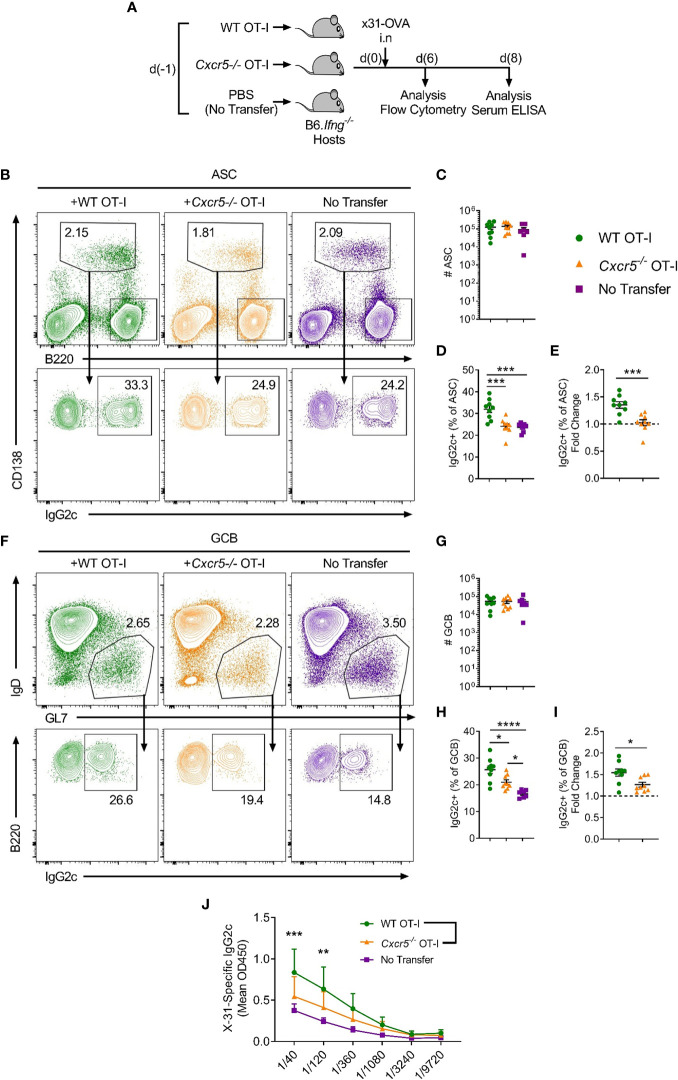Figure 5.
CXCR5+CD8+ T cells promote class switching to IgG2c in responding B cells following IAV infection. WT or Cxcr5 -/- OT-I cells (or PBS only for no transfer controls) were transferred i.v. into separate B6.Ifng-/- mice that were then infected with x31-OVA i.n. (A) Schematic outline of the experiment. (B) Gating strategy used for identification of CD138+B220int ASCs and IgG2c-switching in ASCs in the mLN. Cells in the top panel were pre-gated on live, single cells. (C) Quantification of ASC number. (D) Frequency of IgG2c+ ASCs among total ASCs. (E) Fold change in IgG2c-induction relative to the no transfer control (dashed line). (F) Gating strategy used for identification of B220+IgD-GL7+ GCB cells and IgG2c-switching in GCB cells in the mLN. Cells in the top panel were pre-gated on live, single, B220+CD138- cells. (G) Quantification of GCB cell number. (H) Frequency of IgG2c+ GCB cells among total GCB cells. (I) Fold change in IgG2c-induction relative to the no transfer control (dashed line). (J) Levels of serum x31-specific IgG2c on day 8 post-infection assessed by ELISA. (C–E, G–I) Data are pooled from two independent experiments with a total of 7-9 mice group or (J) representative of two independent experiments with 4-5 mice per group. (C–E, G–I) Data were analysed by ordinary one-way ANOVA or (J) two-way ANOVA with Bonferroni’s multiple comparison test. (C–E, G–I) Mean ± SEM or (J) Mean + SD. *p < 0.05, **p < 0.01, ***p < 0.001, ****p < 0.0001.

